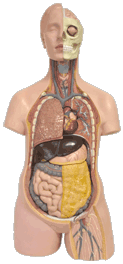At WiseGEEK, we're committed to delivering accurate, trustworthy information. Our expert-authored content is rigorously fact-checked and sourced from credible authorities. Discover how we uphold the highest standards in providing you with reliable knowledge.
What is a C-Type Lectin?
Lectins are proteins that are able to recognize and bind with specific carbohydrate molecules. C-type lectins are an important group of proteins found in the immune system of animals. These lectins are named C-type because of their calcium dependent carbohydrate recognition domain (CRD). In the immune system, C-type lectins act as recognition molecules by binding to foreign microorganisms. They also promote the movement and selective adhesion of white blood cells.
The C-type lectin has a three-dimensional fold, the CRD, in which calcium ions contribute to the lectin's ability to recognize and bind carbohydrates. In the immune system, carbohydrate recognition contributes to the ability of immune cells to move from one area of the body to another. It also allows immune cells to identify and discriminate between proteins that belong to the host and those that belong to foreign organisms. There are a number of different C-type lectin subfamilies, including collectins, selectins, proteoglycans, and lymphocyte lectins.

Collectins are involved in inborn immunity, aiding the immune system in recognizing cells that are not part of the host body. They bind to pathogens, such as bacteria or fungi, and act as marker tags. This identifies the pathogen for destruction by phagocytic white blood cells. The C-type lectin receptors on white blood cells are specific for carbohydrates that belong to microorganisms, but not to host cells. Collectins also identify host proteins or cells that have become old and need to be removed from the body.
Selectins are found in the endothelium, the cells that line the bloodstream. This type of C-type lectin is also found in circulating white blood cells, or leukocytes. Selectins help leukocytes to home in on areas of infection or inflammation and to migrate between the blood and lymph nodes. Additionally, selectins play a role in selective cell adhesion. They mediate cell-cell contact, either between leukocytes or between leukocytes and the endothelium.
Three types of selectins have been identified. E-selectin is found in cytokine-activated endothelial cells — cells that have been activated by the immune system. L-selectin is found in leukocytes, and allows leukocytes to adhere and interact with each other. P-selectin is found in endothelial cells and platelets, the cells involved in blood clotting. As well, all three selectins are involved in leukocyte to endothelial cell adhesion.
Chondroitin sulfate proteoglycans are termed lecticans. Lecticans are C-type lectins and include aggrecan, brevican, neurocan, and versican. Aggrecan is found in cartilage, brevican and neurocan are found in the nervous system, and versican is found is the extracellular matrix of many different organs and tissues. Versican regulates several growth factors, and mutations in this protein have been noted to negatively affect vision.
Lymphocyte lectins have been identified on human and rodent lymphocytes. Their functions are not yet well understood, however.
AS FEATURED ON:
AS FEATURED ON:










Discuss this Article
Post your comments